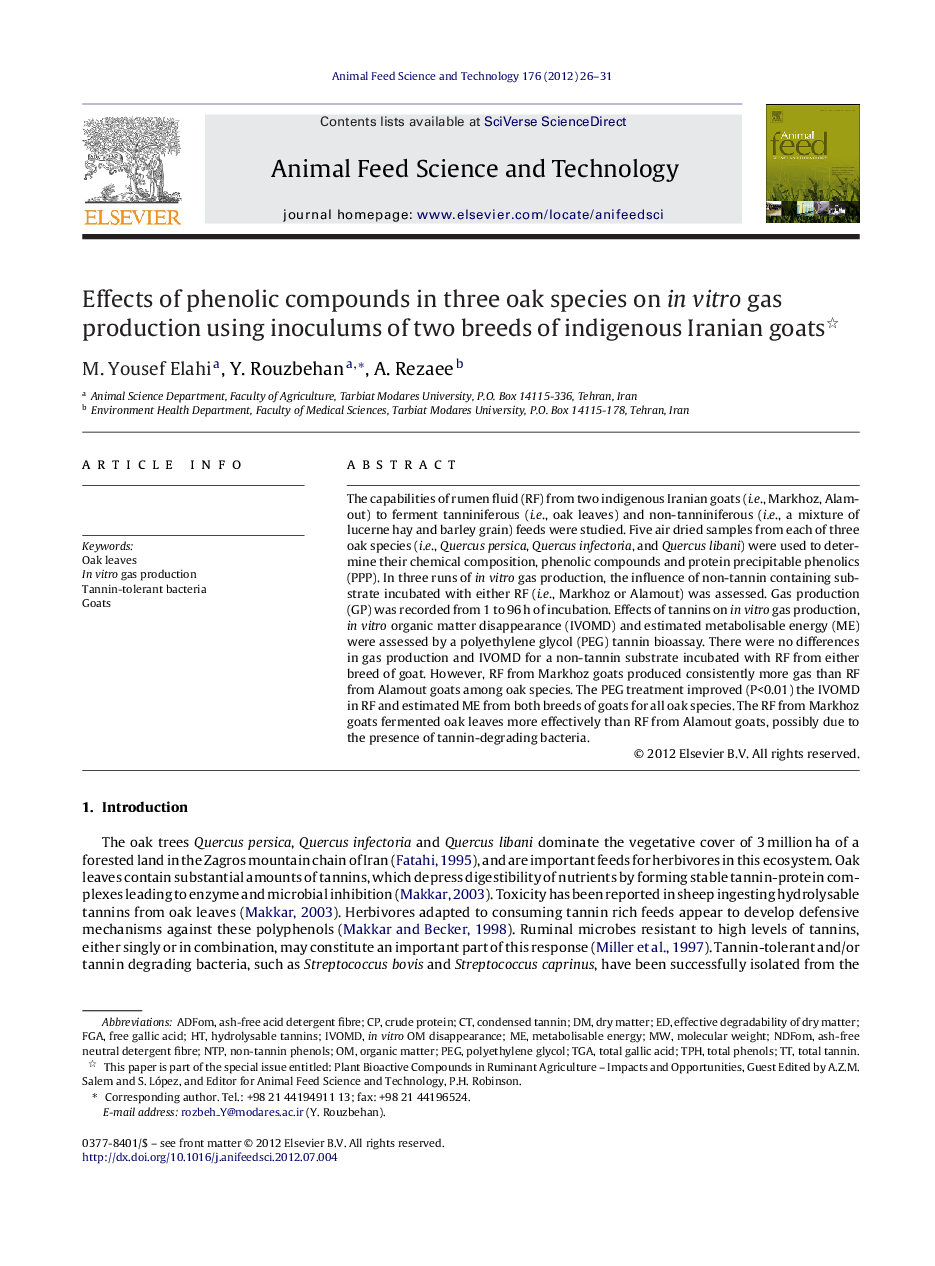| Article ID | Journal | Published Year | Pages | File Type |
|---|---|---|---|---|
| 8492029 | Animal Feed Science and Technology | 2012 | 6 Pages |
Abstract
The capabilities of rumen fluid (RF) from two indigenous Iranian goats (i.e., Markhoz, Alamout) to ferment tanniniferous (i.e., oak leaves) and non-tanniniferous (i.e., a mixture of lucerne hay and barley grain) feeds were studied. Five air dried samples from each of three oak species (i.e., Quercus persica, Quercus infectoria, and Quercus libani) were used to determine their chemical composition, phenolic compounds and protein precipitable phenolics (PPP). In three runs of in vitro gas production, the influence of non-tannin containing substrate incubated with either RF (i.e., Markhoz or Alamout) was assessed. Gas production (GP) was recorded from 1 to 96Â h of incubation. Effects of tannins on in vitro gas production, in vitro organic matter disappearance (IVOMD) and estimated metabolisable energy (ME) were assessed by a polyethylene glycol (PEG) tannin bioassay. There were no differences in gas production and IVOMD for a non-tannin substrate incubated with RF from either breed of goat. However, RF from Markhoz goats produced consistently more gas than RF from Alamout goats among oak species. The PEG treatment improved (P<0.01) the IVOMD in RF and estimated ME from both breeds of goats for all oak species. The RF from Markhoz goats fermented oak leaves more effectively than RF from Alamout goats, possibly due to the presence of tannin-degrading bacteria.
Keywords
Related Topics
Life Sciences
Agricultural and Biological Sciences
Animal Science and Zoology
Authors
M. Yousef Elahi, Y. Rouzbehan, A. Rezaee,
